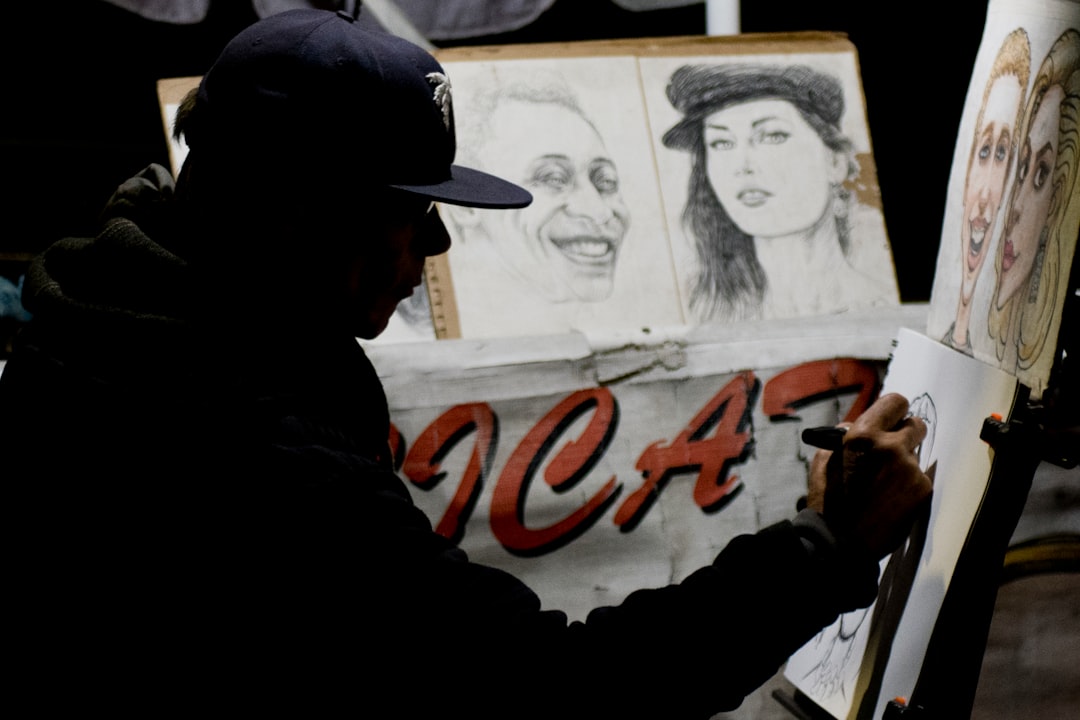In our fast-paced world, maintaining focus and concentration can feel like an uphill battle. Distractions lurk around every corner, from digital notifications to the endless demands of daily life. But what if a simple, accessible activity could be your secret weapon for enhancing mental clarity and sustained attention? This article explores how the practice of “draw-in”—interpreted as the deep engagement in detailed drawing or sketching—can significantly boost your concentration.
By immersing yourself in the intricate process of creating art, you not only unlock your creative potential but also train your brain to filter out noise and zero in on the task at hand. We’ll delve into the cognitive mechanisms at play, practical benefits, and how you can incorporate this powerful technique into your routine to achieve a heightened state of focus.
What is “Draw-in” in the Context of Concentration?
While “draw-in” might evoke various meanings, in the realm of focus and mental clarity, we refer to it as the act of deeply engaging in the process of drawing or sketching. This isn’t about artistic mastery, but rather the deliberate, focused attention required to observe, plan, and execute lines, shapes, and textures on a surface.
Beyond Simple Doodling
Unlike casual doodling, which can be a subconscious activity, “draw-in” involves a conscious effort to capture details, understand spatial relationships, and translate observations into visual form. This active engagement demands a higher level of cognitive processing and sustained attention, making it an excellent exercise for your brain’s focus muscles.

The Cognitive Demands of Drawing
Drawing is a complex cognitive activity that engages multiple brain regions simultaneously. It’s not just about putting pencil to paper; it involves observation, spatial reasoning, motor control, and problem-solving. These demands naturally cultivate and strengthen your ability to concentrate.
Active Observation and Visual Processing
When you draw, you’re forced to truly see. This means paying close attention to nuances like light, shadow, texture, and proportion. This active observation trains your visual cortex and improves your ability to notice details in your environment, a skill directly transferable to other areas requiring focus.
Did You Know? Research suggests that engaging in visual arts can enhance cognitive functions such as attention, memory, and problem-solving skills. This is because art creation activates both hemispheres of the brain, fostering holistic cognitive development.
Fine Motor Control and Hand-Eye Coordination
The precise movements required for drawing, from delicate shading to bold lines, refine your fine motor skills and hand-eye coordination. This physical aspect of drawing demands a high degree of concentration to execute intentions accurately, further solidifying neural pathways related to focus.

Mindfulness and Presence Through Art
One of the most profound ways “draw-in” enhances concentration is by fostering a state of mindfulness. When you are deeply engrossed in drawing, your mind tends to quiet down, and you become fully present in the moment.
Entering a Flow State
Many artists describe entering a “flow state” while drawing—a psychological state of deep immersion and enjoyment in an activity. In this state, distractions fade, and time seems to disappear. This is the epitome of concentration, and drawing provides a natural pathway to achieve it.
“Art is not what you see, but what you make others see.” – Edgar Degas. This quote highlights the transformative power of observation and interpretation inherent in drawing, which requires intense focus.
Reducing Mental Clutter
The focused nature of drawing acts as a mental detox. By directing your attention to the creative process, you naturally push aside worries, anxieties, and the endless to-do lists that often clutter your mind. This mental decluttering creates space for clearer, more sustained focus when you return to other tasks.
For more insights into how art can help you focus, consider reading this article from Psychology Today on Art and Focus, published in 2021.
Enhancing Problem-Solving and Observation
Drawing is inherently a problem-solving activity. Whether you’re trying to accurately render a complex object or convey an emotion, you’re constantly making decisions and finding solutions. This iterative process strengthens your cognitive flexibility and problem-solving skills, which are crucial components of sustained concentration.
Visualizing and Planning
Before making a mark, you often visualize the outcome and plan your approach. This mental rehearsal and strategic thinking are direct exercises in concentration. You learn to break down complex visual information into manageable parts, a skill that translates well to tackling complex problems in any field.

Stress Reduction and Mental Clarity
Beyond direct cognitive benefits, “draw-in” contributes to concentration by reducing stress and promoting a calm mental state. A relaxed mind is a focused mind.
A Therapeutic Outlet
Engaging in creative activities like drawing can be a powerful stress reliever. It provides a non-verbal outlet for emotions and a sense of accomplishment, which can significantly improve overall well-being and, consequently, your ability to focus. The repetitive, rhythmic nature of drawing can also be meditative.
The University of Michigan Health provides an excellent overview of the broader health benefits of art, including its impact on mental well-being and stress reduction. You can read more about it here: University of Michigan Health on Art’s Benefits (published in 2023).
Improved Mood and Motivation
When you feel good, you’re more likely to be motivated and focused. The positive emotions associated with creative expression and the sense of progress in drawing can elevate your mood, making it easier to engage deeply with tasks that require sustained attention.
Practical Tips for Incorporating “Draw-in”
Ready to harness the power of “draw-in” for better concentration? Here are some practical tips to get started:
- Start Small: You don’t need to be an artist. Begin with simple objects, geometric shapes, or even just lines and patterns. The goal is focused engagement, not a masterpiece.
- Set Aside Dedicated Time: Even 15-20 minutes a day can make a difference. Treat it as a mental workout.
- Minimize Distractions: Find a quiet space, turn off notifications, and allow yourself to fully immerse in the activity.
- Focus on the Process: Don’t judge your results. The benefit comes from the act of drawing and the concentration it demands, not the aesthetic outcome.
- Try Different Mediums: Experiment with pencils, pens, charcoal, or even digital drawing. Find what feels most engaging for you.
Pro Tip: Consider keeping a small sketchbook and pencil with you. A few minutes of focused sketching during a break can reset your mind and improve subsequent concentration.
Conclusion
The act of “draw-in,” interpreted as deeply focused drawing or sketching, offers a powerful and accessible pathway to improved concentration. By engaging your cognitive functions, fostering mindfulness, enhancing problem-solving skills, and reducing stress, drawing provides a holistic workout for your brain’s attention systems.
It’s not about becoming the next great artist, but about embracing a practice that naturally trains your mind to be more present, observant, and resilient to distractions. So, grab a pencil and paper, and start drawing your way to a more focused and clear-headed you.
What are your favorite ways to boost concentration? Have you ever found yourself deeply focused while engaged in a creative activity? Share your experiences in the comments below!
Further Reading & Resources
- The Benefits of Art for Your Health – University of Michigan Health (2023): Explores the broad health advantages of engaging with art.
- How Art Can Help You Focus – Psychology Today (2021): Delves into the psychological mechanisms behind art’s ability to enhance concentration.
- The Connection Between Art, Healing, and Public Health: A Review of Current Literature – American Journal of Public Health (2010): A foundational academic review on the therapeutic aspects of art.
